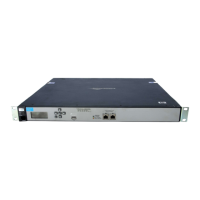Network configuration
IP routes
3-27
DNS switch over
Controls how the controller switches back to the primary server.
When enabled, the controller switches back to the primary server once the primary
server becomes available again.
When disabled, the controller switches back to the primary server only when the
secondary server becomes unavailable.
DNS interception
When enabled, the controller intercepts all DNS requests and relays them to the configured
DNS servers. DNS interception must be enabled to support:
Redirection of users to the public access interface login page when the controller cannot
resolve the domain requested by the user. For example, if the user is using a private or
local domain as the default home page in its browser.
Users configured to use HTTP proxy.
Users with static IP addresses when the Allow any IP address option is enabled on the
Public access > Access control page.
When disabled, the controller does not intercept any DNS requests, enabling devices to
use a DNS server other than the controller. To support this option, you must set
Network > Address allocation to DHCP relay agent or Static.
Note When Network > Address allocation is set to DHCP Server the controller always
returns its own address as the DNS server.
IP routes
The routing module on the controller provides the following features:
Compliance with RFC 1812, except for multicast routing
Supports Classless Inter Domain Routing (CIDR)
Supports Routing Internet Protocol (RIP) versions 1 and 2 in active or passive mode.
Output from the router is sent to the appropriate logical interface based on the target address
of the traffic. Supported logical interfaces include:
VLAN
Untagged
IPSec client
PPTP client
GRE tunnel

